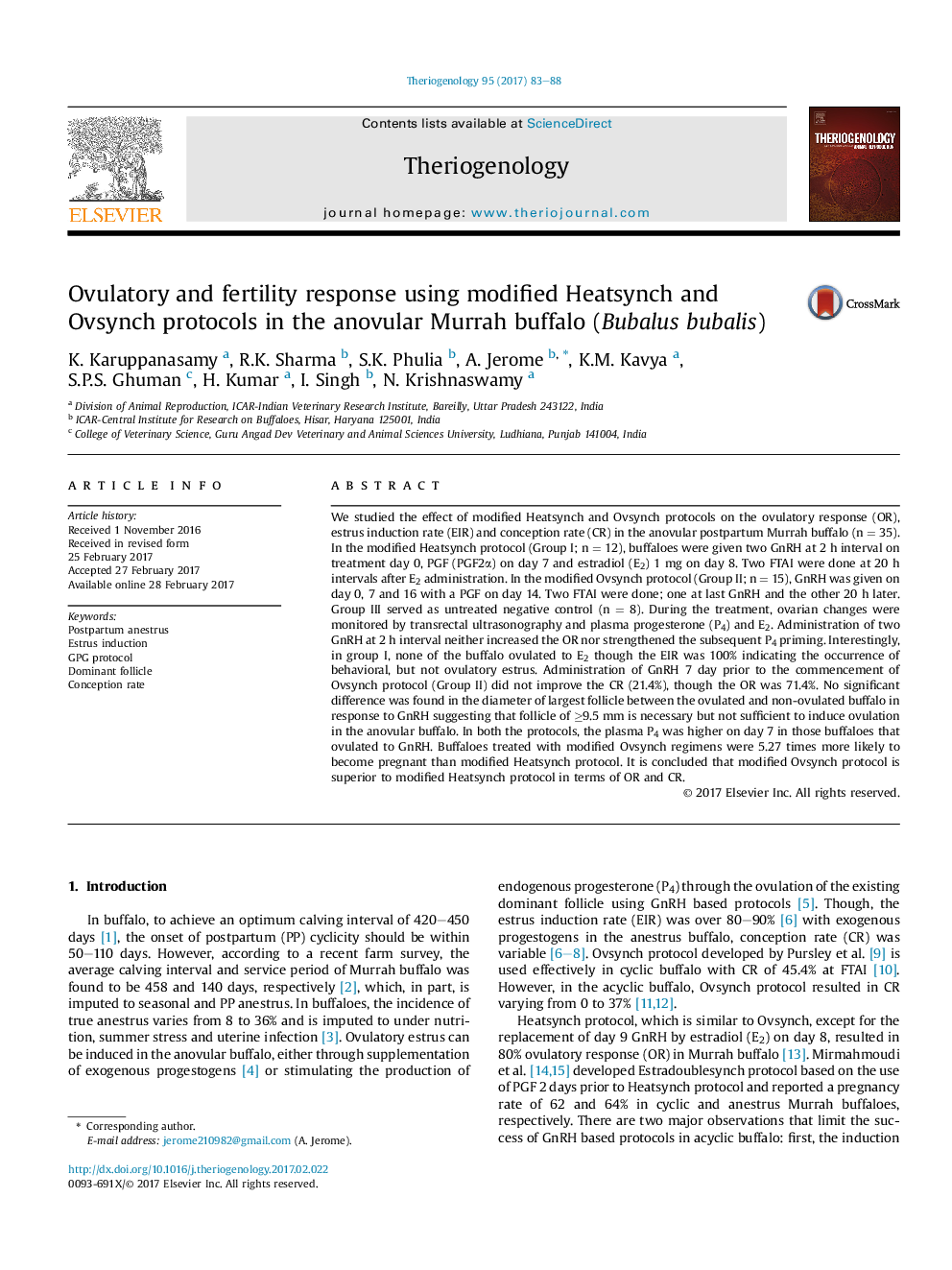| Article ID | Journal | Published Year | Pages | File Type |
|---|---|---|---|---|
| 5523376 | Theriogenology | 2017 | 6 Pages |
â¢This study reports the efficacy of modified Heatsynch and modified Ovsynch protocol in anovular Murrah buffaloes.â¢GnRH based protocol is superior to E2 based protocol in inducing fertile heat in anovular buffaloes.â¢Dominant follicle of â¥Â 9.5 mm diameter is necessary, but not sufficient to induce ovulation by GnRH in buffaloes.
We studied the effect of modified Heatsynch and Ovsynch protocols on the ovulatory response (OR), estrus induction rate (EIR) and conception rate (CR) in the anovular postpartum Murrah buffalo (n = 35). In the modified Heatsynch protocol (Group I; n = 12), buffaloes were given two GnRH at 2 h interval on treatment day 0, PGF (PGF2α) on day 7 and estradiol (E2) 1 mg on day 8. Two FTAI were done at 20 h intervals after E2 administration. In the modified Ovsynch protocol (Group II; n = 15), GnRH was given on day 0, 7 and 16 with a PGF on day 14. Two FTAI were done; one at last GnRH and the other 20 h later. Group III served as untreated negative control (n = 8). During the treatment, ovarian changes were monitored by transrectal ultrasonography and plasma progesterone (P4) and E2. Administration of two GnRH at 2 h interval neither increased the OR nor strengthened the subsequent P4 priming. Interestingly, in group I, none of the buffalo ovulated to E2 though the EIR was 100% indicating the occurrence of behavioral, but not ovulatory estrus. Administration of GnRH 7 day prior to the commencement of Ovsynch protocol (Group II) did not improve the CR (21.4%), though the OR was 71.4%. No significant difference was found in the diameter of largest follicle between the ovulated and non-ovulated buffalo in response to GnRH suggesting that follicle of â¥9.5 mm is necessary but not sufficient to induce ovulation in the anovular buffalo. In both the protocols, the plasma P4 was higher on day 7 in those buffaloes that ovulated to GnRH. Buffaloes treated with modified Ovsynch regimens were 5.27 times more likely to become pregnant than modified Heatsynch protocol. It is concluded that modified Ovsynch protocol is superior to modified Heatsynch protocol in terms of OR and CR.
